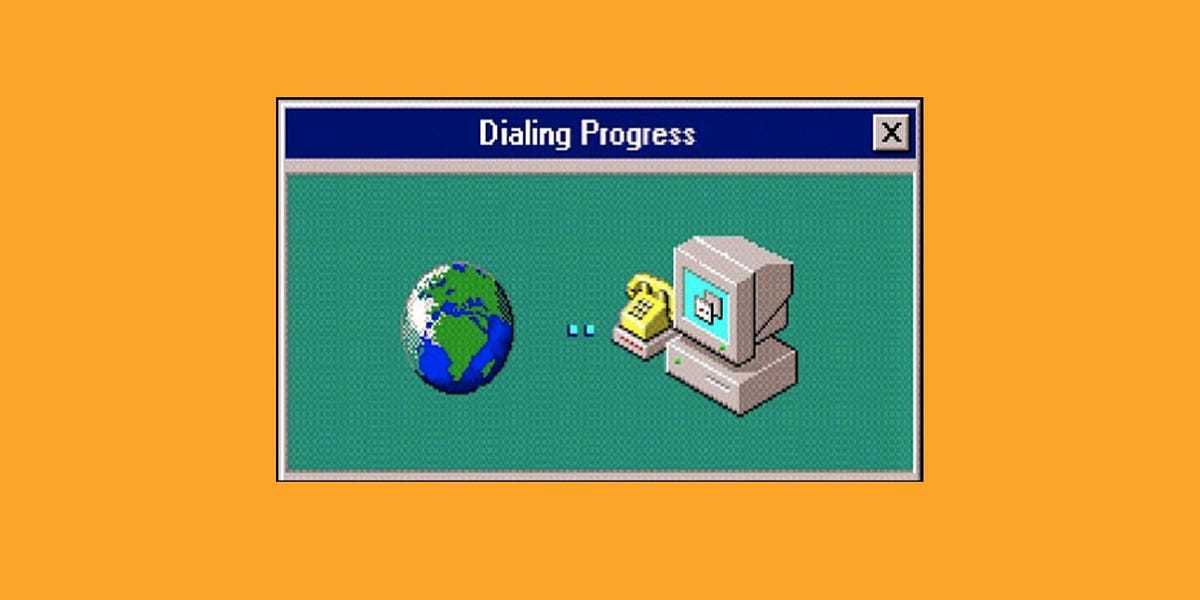It is 1995.
Your computer modem screeches as it tries to connect to something called the internet. Maybe it works. Maybe you try again.
For the first time in history, you can exchange letters with someone across the world in seconds. Only 2000-something websites exist1, so you could theoretically visit them all over a weekend. Most websites are just text on gray backgrounds with the occasional pixelated image2. Loading times are brutal. A single image could take a minute, a 1-minute video could take hours. Most people do not trust putting their credit cards online. The advice everyone gives: don’t trust strangers on the internet.
People split into two camps very soon.
Optimists predict grand transformations. Some believe digital commerce will overtake physical retail within years. Others insist we’ll wander around in virtual reality worlds.
“I expect that within the next five years more than one in ten people will wear head-mounted computer displays while traveling in buses, trains, and planes.” – Nicholas Negroponte, MIT Professor, 1993
Pessimists call the internet a fad and a bubble.
Source: Did Paul Krugman Say the Internet’s Effect on the World Economy Would Be ‘No Greater Than the Fax Machine’s’? Snopes, 2018. Original quote in Red Herring magazine, 1998If you told the average person in 1995 that within 25 years, we’d consume news from strangers on social media over newspapers, watch shows on-demand in place of cable TV, find romantic partners through apps more than through friends, and flip “don’t trust strangers on the internet” so completely that we’d let internet strangers pick us up in their personal vehicles and sleep in their spare bedrooms, most people would find that hard to believe.
We’re in 1995 again. This time with Artificial Intelligence.
And both sides of today’s debate are making similar mistakes.
One side warns that AI will eliminate entire professions and cause mass unemployment within a couple of years. The other claims that AI will create more jobs than it destroys. One camp dismisses AI as overhyped vaporware destined for a bubble burst, while the other predicts it will automate every knowledge task and reshape civilization within the decade.
Both are part right and part wrong.
Geoffrey Hinton, who some call the Father of AI, warned in 2016 that AI would trigger mass unemployment. “People should stop training radiologists now,” he declared, certain that AI would replace them within years.
Source: Twitter/X, Andy Walters/Geoffrey Hinton, 2023Yet as Deena Mousa, a researcher, shows in “The Algorithm Will See You Now,” AI hasn’t replaced radiologists, despite predictions. It is thriving.
In 2025, American diagnostic radiology residency programs offered a record 1,208 positions across all radiology specialties, a four percent increase from 2024, and the field’s vacancy rates are at all-time highs. In 2025, radiology was the second-highest-paid medical specialty in the country, with an average income of $520,000, over 48 percent higher than the average salary in 2015.











